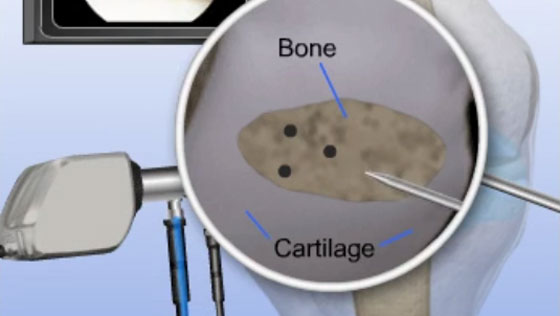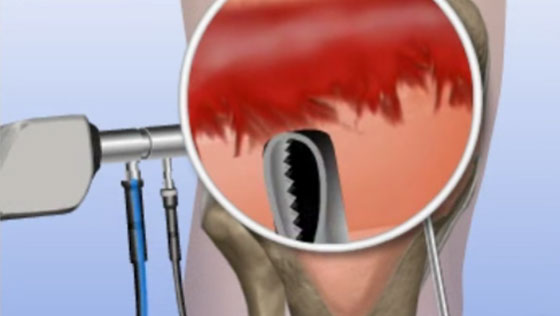Patella Realignment with Lateral Release Surgery
Lateral release surgery (also called lateral retinacular release) is an arthroscopic surgical procedure performed to treat patellar instability, during which the lateral retinaculum is cut in order to properly realign the patella.
Key statistics about Lateral Release Surgery
- Dislocation of the patella is one of the most common knee injuries in pediatric and adolescent individuals[1]
- 15-44% of individuals who suffer their first patellar dislocation will suffer a subsequent dislocation[2]
- 50% of individuals who suffer a second patellar dislocation will suffer a subsequent dislocation[2]
Knee Anatomy
The knee joint is formed by three bones: the femur (thigh bone), the tibia (shin bone), and the patella (kneecap). The patella rests in a groove on your femur called the trochlea (or trochlear groove), and glides smoothly in this groove when the knee bends and straightens.

The medial and lateral retinaculum is fibrous tissue on either side of the patella that helps keep it tracking in place in the trochlea as the knee moves.
Why is Lateral Release Surgery performed?
Patellar instability (also called patellofemoral instability) is a condition in which the patella slips out of the trochlea, either partially (subluxation) or fully (dislocation).

In patients with patellar instability, there can be abnormal outward or lateral pull on the patella that is caused by an overly tight lateral retinaculum. The patella can be pulled out of the trochlea, causing pain and swelling, and impacting knee function.
Lateral release surgery is performed to realign the patella and relieve the pressure of an overly tight lateral retinaculum.

Who needs Lateral Release Surgery?
A tight lateral retinaculum can be caused by knee injury, muscle weakness, or looseness of knee ligaments.
Lateral release is necessary to address the pain, instability, and limited knee joint function associated with an overly tight lateral retinaculum in patients who do not respond to nonsurgical measures.
How is Lateral Release Surgery performed?
- The surgeon will make small incisions around the knee joint and the arthroscope will be inserted into one of the incisions.
- Saline solution is pumped into the joint to expand it and improve visualization.
- Images from the arthroscope are sent to a video monitor where the surgeon can see inside the joint.
- The lateral retinaculum is cut.
- Finally, the saline solution is drained, instruments are removed, and the incisions are closed using sutures.
What are the risks of Lateral Release Surgery?
Risks associated with lateral release surgery may include:
- Bleeding
- Infection
- Blood clots
- Nerve or blood vessel damage
- Recurrent patellar dislocation
How long does it take to recover from Lateral Release Surgery?
-
24 hours after surgery
Most patients are able to return home the same day as their procedure. A physical therapy routine will be established by the surgeon and physical therapist, and pain medication may be prescribed. Crutches will be provided to keep weight off the affected leg. -
2 weeks after surgery
Any non-dissolvable sutures are removed and bruising and swelling begin to subside. -
6-12 weeks after surgery
Most patients can walk with full weight on the affected leg and resume most daily activities. -
3-6 months after surgery
Most patients are fully recovered from lateral release surgery.
What are the results of Lateral Release Surgery?
The objective of lateral release surgery is to realign the patella in order to alleviate knee pain and restore knee function in patients who do not respond to nonsurgical treatment. For patients who meet eligibility criteria for lateral release, the surgery can provide improvement in knee function and persistent pain.
Find an Orthopedic Doctor in Your Area




